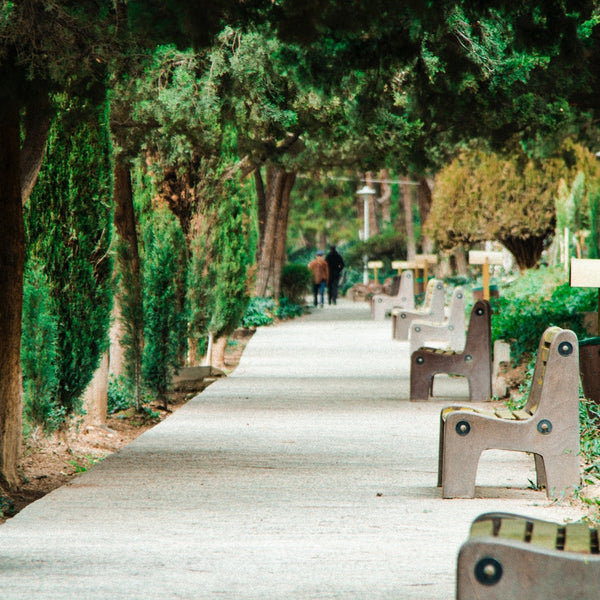Eat Nourishing Foods

Ever since social isolation became a way of life, how we eat has shifted. Not knowing what the future would bring, many of us rushed to the grocery stores and stockpiled dietary staples that would last for days, weeks, and beyond. But with so uncertainty lingering in the air, it was difficult to foresee what would truly be needed. And so the toilet paper hoarding mysteriously began. But when it comes to keeping ourselves healthy, how we nurture our bodies matters most. So this isn't the best time to indulge in that secret junk food stash. Better to let it sit in on the shelf, and focus on more nutritious options.

I've always been intrigued by period films that illustrate Medieval peasant life. There's something serene about the basic ways food was not only prepared but also enjoyed; it often involved eating with one’s hands and became an immersive experience. This way of life harkens back to less complicated times, before nature's bounty was exorcised into frankenfoods. GMO were merely the initials of Gertrude, Mary, and Oliver. And those nasty chemicals and preservatives that grace supermarket labels hadn't even been invented yet. Food was sustenance. And it could also be a sensual experience. Meals were a time for reflection and gratitude. Unlike highbrow members of society who dined on pheasants from gilded trays and goblets brimming with imported Merlot, peasants were of low financial means, and usually lived off the land. Occasionally, there would be a bit of meat, poultry or fish, but for the most part, their diets were plant and dairy-based.
What might eating with peasant flair look like today? For suggestions, read on...
Porridge

Come morning time, a warm cereal can gently ease you into the day. There are a rainbow of ways to whip up a porridge; choose a base such as: grits, buckwheat, oatmeal, quinoa, or bulgar wheat. Add some cow's milk or dairy free alternatives, a dash of cinnamon, and sea salt. Customize as you wish. For recipes, check out Simple Vegan Porridge from BBC Food, vegan cheese grits from Gastroplant and Garlic Quinoa Grits from A Dash of Soul.
Legumes

Hearty, substantial and rustic, legumes are a terrific source of protein, fiber, vitamins and minerals. Black, kidney, great northern, all beans are nutritious so choose your favorites; peas are protein rich and can be used in a variety of ways. And lentils contain calcium, magnesium, potassium, and have substantial amounts of protein. They're also highly versatile, and work well warm as a stew, partnered with rice, or chilled with herbs and greens in a salad. For a breakdown of the nutritional content for different types of beans, see this list from the Bean Institute.
Vegetables & Fungi

Favorites of peasants were said to be cabbage, leeks, potatoes. Although right now it may be difficult to shop seasonally and locally sourced as the peasants did. If you're looking to store ingredients, substitute with frozen, freeze dried, and/or vegetable powders. Also, stock up on root veggies and wild mushrooms such as Maitake, chanterelles, and Oyster. For a breakdown of mushrooms and health benefits, read Lovable Mushrooms from our blog.
Stews & Soups

Often soup and a crust of bread would suffice as a meal. Other times harvests were more plentiful and stews could be made from beans, fish, poultry or beef, with carrots and foraged herbs. Cooking stew is a similar process to brewing soup as the flavors steep together, melding, and altering tastes. Although, when cooking stew you'll want to maintain the texture of various ingredients and decide how flavors ought to play off one another. So add items at different times to maintain the individual tastes of each, and not overcook. Lentils and beans work well in stews, adding thickness and protein.
As if a culinary meditation, when preparing soup, center the recipe around one vegetable. For instance, combine sweet potato with broth/butter/or milk and scallions, or tomato with rice and a bit of sea salt, butter/milk optional. Adding onions, peppers, and garlic to soups and stews adds a healthy boost of flavor; lightly fry with grapeseed or coconut oil until browned. Checked out Spiced Sweet Potato lentil Soup, from the Minimalist Baker.
Buckwheat

A traditional Eastern European staple, buckwheat is gluten free superfood that can be used to make an array of breads, muffins, crepes, kasha, ect... For recipes check out our previous post, Buckwheat-gluten-free-superfood. (Fun fact, the meditation pillow, yoga bolster, and Pranayama pillow in our Natural Yoga Pillow Set are filled with buckwheat hulls that create a firm base that still adjusts to your body!)
Bread

Instead of baguettes and semolina, dark bread, made from rye grains, was the go to loaf of yesteryear. Additionally, warm, homemade sourdough and wheat also graced the plates of hardworking folks. Try making your own bread; the Clever Carrot's recipe shows you how to make sourdough starter with only flour and water; and the bread itself is naturally gluten-free. If you’d prefer a range of choices, check out 15 breads you can make in a cast iron skillet.
Warm flaky biscuits are an irresistible comfort food. And with just a few ingredients, they're easy to whip up from scratch, and naturally gluten-free. Here’s a recipe for drop biscuits made with dairy from Cooking Light, and a vegan one from The Minimalist Baker. Keep them basic and serve warm with your favorite preserves. For fancier options: make them sweet or savory by adding ingredients such as scallions, chives, parsley, dill, currents, mulberries or cherries.
When it comes to dining with peasant inspiration, it’s important to appreciate and savor the beauty of each ingredient. Wholesome. Uncomplicated. When we spend time eating holistically, it allows our ideas surrounding healthy food to evolve. Hopefully, this time of social isolation will bring positive changes. Already there’s heightened awareness surrounding wellness and mindful eating; as we form new healthful habits, they will carry us long into the future. Perhaps not too long from now, when you enjoy sunny days with friends, outside, you’ll look back and remember this time of change and reinvention, and how it affected you in lasting ways.



